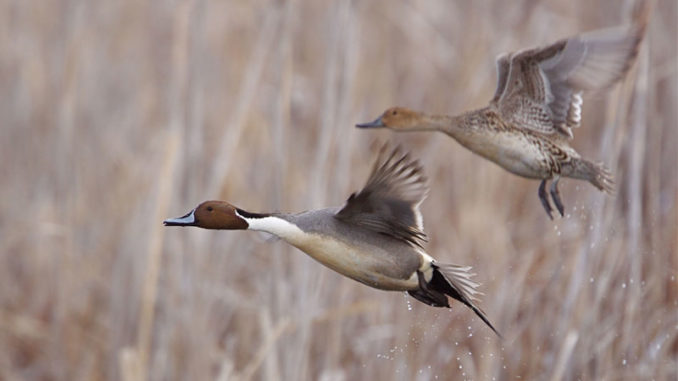
1.94 million birds is also 32 percent below long-term December average
Louisiana duck hunters headed back to their blinds tomorrow morning for the opening day of the second split likely were hoping for better news from the Department of Wildlife and Fisheries’ annual statewide aerial survey completed earlier this week.
According to Larry Reynolds, the state’s waterfowl study leader, he and his crews estimated about 1.94 million ducks on this month’s survey, which is 36 percent lower than last December’s estimate of 3.02 million, and 32 percent lower than the long-term December average of 2.84 million birds.
There wasn’t a whole lot of good news in the survey, Reynolds said in an interview Friday afternoon.
“Lot of diving ducks and not so many dabbling ducks – that typically is not a good thing for our hunters, because most of them are dabbling duck hunters,” he said, noting the flying was done Monday through Wednesday of this week. “Overall, the survey was below average.”
The Southeast Louisiana portion of the aerial survey was not completed in November because of weather issues so no comparisons can be made for that region, but estimates increased from 247,000 to 886,000 in Southwest Louisiana, and from 103,000 to 156,000 for Catahoula Lake.
Here are some key elements of Reynolds’ report:
- Canvasbacks, ring-necked ducks, and scaup were well above their respective long-term December averages of 49,000, 198,000 and 76,000. However, all dabbling ducks except blue-wings and shovelers were far below their December long-term averages, especially gadwalls, green-wings and pintails, with December averages of 906,000, 480,000 and 344,000 respectively. The estimate for mottled ducks was nearly twice the 19,000 estimated last December, but remains far below the long-term December average of 60,000. Although the total coot estimate was only 18 percent below the most recent 10-year December average of 1,127,000, the 90,000 estimated in Southwest Louisiana is 79 percent lower than the 10-year average of 424,000 for that region.
- Ducks were evenly distributed between the southwest and southeast coastal survey regions, but dabbling ducks made up 70 percent of the estimate in Southwest Louisiana, and diving ducks were 76 percent of the estimate in Southeast Louisiana. In Southwest Louisiana, concentrations of ducks were seen between Little Pecan and Grand lakes, in the fresh marsh northeast of Grand Lake and on a sewage lagoon near Rayne. Concentrations of both snow and white-fronted geese were noted southwest of Gueydan and north of Lacassine National Wildlife Refuge. In Southeast Louisiana, large numbers of ring-necked ducks and coots were seen in the Upper-Terrbonne marshes south of Amelia, and smaller concentrations of ring-necked ducks and canvasbacks were counted in the marsh east of Venice.
- Water levels were lower than in November, but remain high in most non-tidal locations for this survey. In Southeast Louisiana, good to excellent submerged aquatic vegetation was evident in a number of surveyed locations. With the excellent production of seed-producing annual vegetation seen in Southwest Louisiana during the September survey, good submerged aquatic vegetation in Southeast Louisiana and above-average flooding in the agricultural region, good habitat conditions are expected to be maintained in the coastal region.
- The water level at Catahoula Lake had fallen since the November survey, but recent rainfall/runoff raised it again to about 6 feet higher than the management target, providing continued excellent habitat for large numbers of diving ducks — but relatively few dabblers. The 90,000 canvasbacks and 156,000 diving ducks are the highest in at least the last 10 years, and the 163,000 total ducks is 16 percent higher than the most recent 10-year average.